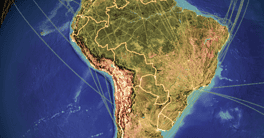Off-grid solar technology will be crucial to meet the energy needs of the 650 million Africans without reliable access to electric power.
Around 60% of Africans lack reliable access to grid-connected electricity. And while the African Development Bank and other multilateral agencies have ambitious plans to increase conventional and hydro-generating capacity and extend grid networks, it is the fast-growing off-grid industry that is set to bridge most of Africa’s energy gap.
Recent research by the Africa Progress Panel, headed by Kofi Annan, found that off-grid solar technology, microgrids (generating less than 50 kW) and larger minigrids will be crucial to meet the energy needs of the 650 million Africans without reliable access to electricity. The International Energy Agency estimates that about 40% of them can be effectively served by minigrids.
“This translates to about 60,000 minigrid systems for mainly rural and remote areas,” says Jon Exel, World Bank senior energy specialist. Costs are falling rapidly, and the off-grid industry, currently dominated by pay-as-you-go household solar kits, is trending toward connected microgrids that offer a more secure supply.
“Until very recently, renewables-based microgrids were more expensive,” says Tobias Bischof-Niemz, former head of the Energy Centre at South Africa’s Council for Scientific and Industrial Research. “Now they are cheaper.”
That is largely because solar panels, wind turbines and electricity storage “are now mass-manufactured products rather than specifically engineered,” Bischof-Niemz says. In the future, he adds, “There will be standardization of microgrid design rather than each one being an engineered project using off-the-shelf bits, thereby cutting costs even further.”
Bischof-Niemz admits microgrids are not a perfect substitute for large transmission grids. But African countries have great potential to leapfrog conventional fossil-fuel systems by installing mini- or microgrids on-site or near customers, he argues. “There is massive potential in countries like Kenya, Ghana and Nigeria,” he says.
These and other countries with low levels of electrification, including Tanzania, Niger, Mali, Senegal and Rwanda, have adopted large-scale minigrid programs with support from the World Bank and other development partners. Key issues to resolve, says Exel, are workable regulations, access to finance, the establishment of minimum technical specifications and the availability of skills and expertise on the ground.
The minigrid industry, according to Bischof-Niemz, is facing challenges similar to those the home-systems industry faced in the early days. Manufacturers sold just the solar panel and expected households to buy other individual components—such as batteries, controllers, wiring and appliances—separately. “This splintered approach had little traction in the marketplace; and sales figures increased only when companies started to package components with end-user appliances such as lights, radios, telephone chargers and TVs,” he explains. “The addition of micro-finance and pay-as-you-go systems further accelerated growth.” He expects financing for this revolution to come primarily from the private sector, backed by guarantees provided by governments or institutions such as the World Bank.
The minigrid industry could learn from this. “When a solar-hybrid generator is packaged together with a controller, distribution system, smart meters and efficient appliances, the value proposition becomes more attractive to customers,” says Exel.
Getting this value proposition right is essential. A series of off-grid networks can be set up more quickly than conventional fixed-grid structures can be expanded. But only if both advance in tandem will Africa’s energy deficit be resolved.



